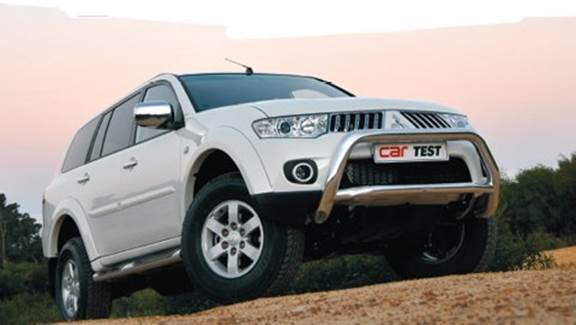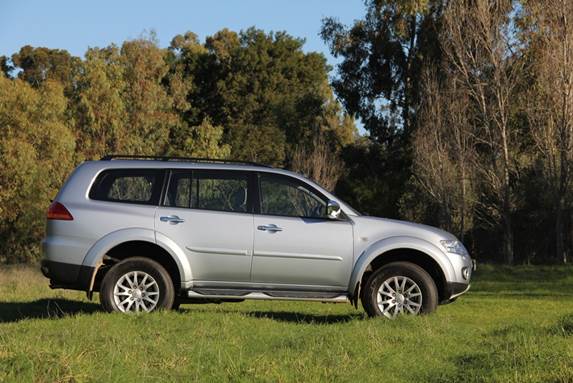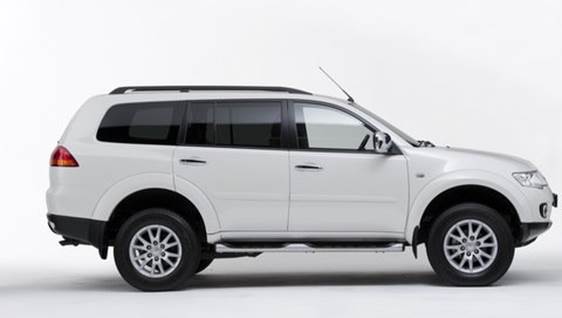A new engine and improved specification at the old price breathe new life into the Pajero Sport
UR last outing with the Mitsubishi Pajero Sport 3,2 DI-D in the December 2009 issue was something of a bittersweet affair. We appreciated its rugged Triton-based underpinnings, practicality and generous specification.
We did, however, baulk at the R414 000 price that was considerably dearer than those of its more established rivals.

With a more powerful new engine, better specification and a competitive price, the 2,5 D-ID GLS 4×4 AT could atone for the previous car’s shortcomings.
Although Mitsubishi has doled out some cosmetic tweaks (new takes on the grille, front bumper and tail-lamps, as well as some bits of chrome garnish making way for body-colored trim, electrically folding wing mirrors with repeaters and 17-inch alloys), the most telling change takes place under the bonnet.
Gone is the clattery, underpowered 3,2-litre unit and in steps a 2,5-litre turbo diesel with a variable-geometry turbocharger and revisions to components such as the diesel injectors. Developing 131 kW and maximum torque of 400 N.m, output hikes of 11 kW and 57 N.m, the new engine has considerably more poke.
There’s a noticeable improvement in urgency off the line, confirmed by a 0-100 km/h sprint time of 12,0 seconds, almost two seconds quicker than the previous version.

And where the 3,2′s peak torque of 343 N.m came in at 2 000 r/min, 350 of the new engine’s 400 N.m is available at just 1 800 r/min. Although the old engine was tested before our mixed-use fuel-route appraisals were implemented, it’s fair to say that the new engine is appreciably more frugal too, returning 10,4 liters/100 km compared with the old unit’s 12,72 liters/100 km fuel-index figure, so expect a range of roughly 700 km from a full tank.
While we wouldn’t go as far as describing the 2,5 as refined, it’s not quite as agricultural as its predecessor and gels fairly well with a new five-speed auto transmission that exhibits smoother shifts than the old four-speeder. That said, there remains a transmission issue that sees the auto ‘box occasionally shifting at random at constant cruising speeds, hampering high-speed momentum.

On rough terrain, those Triton-based underpinnings lend the Pajero Sport ground clearance and approach and departure angles that are better than those of most rivals, while the rear differential lock complements the engine’s additional torque to make it a formidable off-roader. The shift-on-the-fly low-range transfer system also means you can switch from 2WD to 4WD at speeds of up to 80 km/h – ideal when encountering sudden surface changes. The only things possibly impeding serious rock hopping are the side steps and an underbody spare wheel that can snag on steeper departures.
As with any bakkie-under-pinned SUV, the ride is firmly sprung, but it doesn’t readily default to the excessive bounciness that often afflicts such vehicles on variable road surfaces. It also feels composed at motorway speeds, only exhibiting some float when really pressing on. The steering is damped in feel, but it does require more than four turns lock-to-lock and the 11,8-metre turning circle makes it a bit of a brute to thread round town.